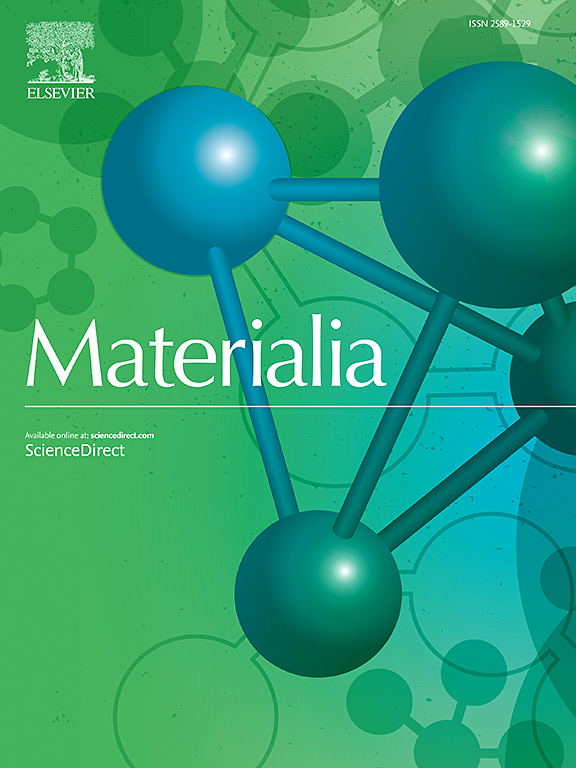An oxidative stress amplified antibacterial S-SEBS@CuLM coating with synergistic ROS scavenging inhibition
IF 2.9
Q2 MATERIALS SCIENCE, MULTIDISCIPLINARY
引用次数: 0
Abstract
As reactive oxygen species (ROS) can induce oxidative stress in bacteria and eliminate them without promoting bacterial drug resistance, ROS-based antibacterial strategies have garnered significant attention in recent years. However, bacteria possess a range of antioxidant mechanisms to counteract the bactericidal effects of ROS. Consequently, in this study, we developed an antibacterial surface based on Ga3+-enhanced ROS antibacterial efficacy. This surface consists of a superhydrophobic material sequentially modified with gallium-based liquid metal (GLM) and Cu2+. It is noteworthy that the increased H2O2 in the bacterial microenvironment enables Cu2+ to produce reactive oxygen species through catalyzing electron transfer in the Fenton reactions to achieve bactericidal effect. Meanwhile, the simultaneous use of Ga3+ and Cu2+ to destroy the bacterial redox process and inhibit its basic function further enhances antimicrobial properties. Results show that this superhydrophobic coating prevents bacterial adhesion and growth while releasing Ga3+ and Cu2+ for sustained bactericidal activity. The antimicrobial rate exceeds 99.99 % against Escherichia coli and Staphylococcus aureus. In addition, the coating also exhibits excellent in vitro biocompatibility. This work provides a novel and effective strategy for developing antimicrobial surfaces for biomedical materials.

氧化应激增强抗菌S-SEBS@CuLM涂层具有协同ROS清除抑制作用
由于活性氧(reactive oxygen species, ROS)能够诱导细菌氧化应激并消除细菌氧化应激而不促进细菌耐药,因此基于活性氧的抗菌策略近年来备受关注。然而,细菌具有一系列的抗氧化机制来抵消活性氧的杀菌作用。因此,在本研究中,我们开发了一种基于Ga3+增强ROS抗菌效果的抗菌表面。该表面由一种超疏水材料组成,该材料由镓基液态金属(GLM)和Cu2+依次修饰。值得注意的是,细菌微环境中H2O2的增加使Cu2+通过催化Fenton反应中的电子转移产生活性氧,从而达到杀菌效果。同时,同时使用Ga3+和Cu2+破坏细菌氧化还原过程,抑制其基本功能,进一步提高抗菌性能。结果表明,该超疏水涂层可以抑制细菌的粘附和生长,同时释放出Ga3+和Cu2+,具有持续的杀菌活性。对大肠杆菌、金黄色葡萄球菌的抑菌率超过99.99%。此外,该涂层还具有良好的体外生物相容性。这项工作为生物医用材料抗菌表面的开发提供了一种新颖有效的策略。
本文章由计算机程序翻译,如有差异,请以英文原文为准。
求助全文
约1分钟内获得全文
求助全文
来源期刊

Materialia
MATERIALS SCIENCE, MULTIDISCIPLINARY-
CiteScore
6.40
自引率
2.90%
发文量
345
审稿时长
36 days
期刊介绍:
Materialia is a multidisciplinary journal of materials science and engineering that publishes original peer-reviewed research articles. Articles in Materialia advance the understanding of the relationship between processing, structure, property, and function of materials.
Materialia publishes full-length research articles, review articles, and letters (short communications). In addition to receiving direct submissions, Materialia also accepts transfers from Acta Materialia, Inc. partner journals. Materialia offers authors the choice to publish on an open access model (with author fee), or on a subscription model (with no author fee).
 求助内容:
求助内容: 应助结果提醒方式:
应助结果提醒方式:


